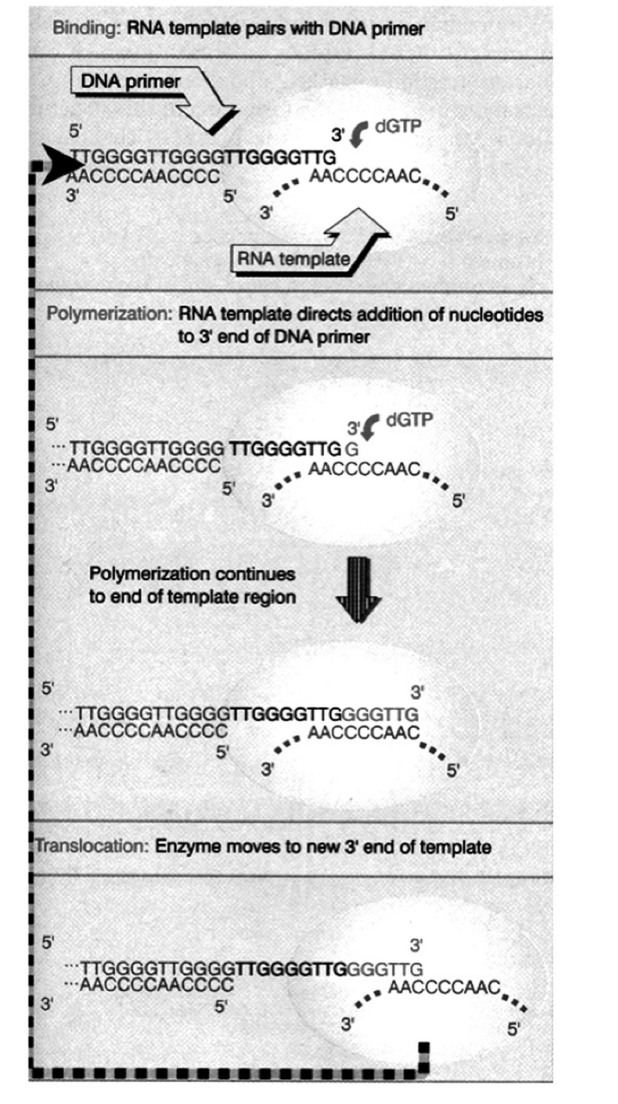L4: Eukaryotic chromosome replication II
1/27
There's no tags or description
Looks like no tags are added yet.
Name | Mastery | Learn | Test | Matching | Spaced |
|---|
No study sessions yet.
28 Terms
What is the first enzymatic step of DNA replication
localised separation
or unwinding of the two DNA strands at the replication origin
catalsed by DNA helicases
Unwound DNA is stabilised by single-stranded binding proteins
DNA polymerases and additional proteins are recruited thhat built up active DNA replication forks
The replicative DNA helicase: the eukaryotic helicase is…
a core complex of six MCM proteins
with many other associated proteins:
Cdc45
GINS complex
Loading the MCM complex (the helicase)
MCM double hexamer complex is loaded at replication origins in an ATP-dependent manner
by origin recognition complex ORC
Involving Cdc6 and cdt1 proteins
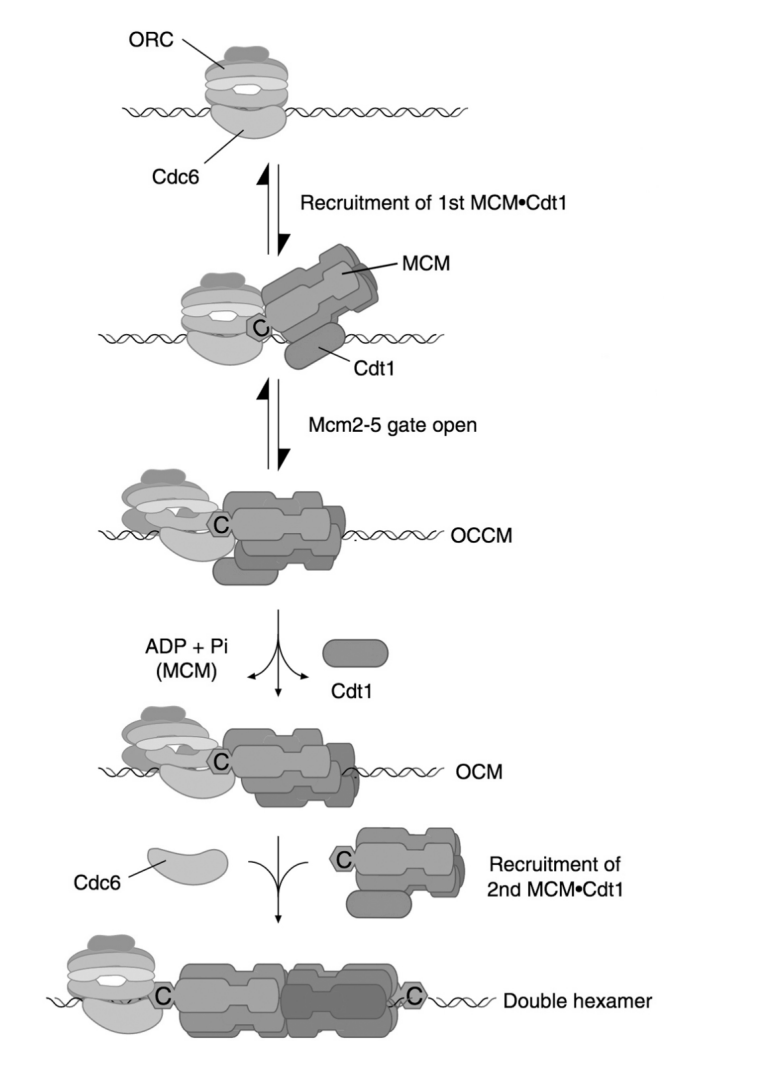
Activation of the MCM helicase in S phase
Loaded but inactive MCM double hexamer complex is converted into an active form
With protein kinases CDK and DDK
with association with several other proteins:
cdc45 and GINS
Complex: CMG complex
(Cdc45, MCM, GINS)
What does DNA helicase activation lead to
local unwinding
separation of the double hexamer complexes
Where do each of the two CMG helicase complexes travel
travel with one of the two emerging replication forks away from the initiation site
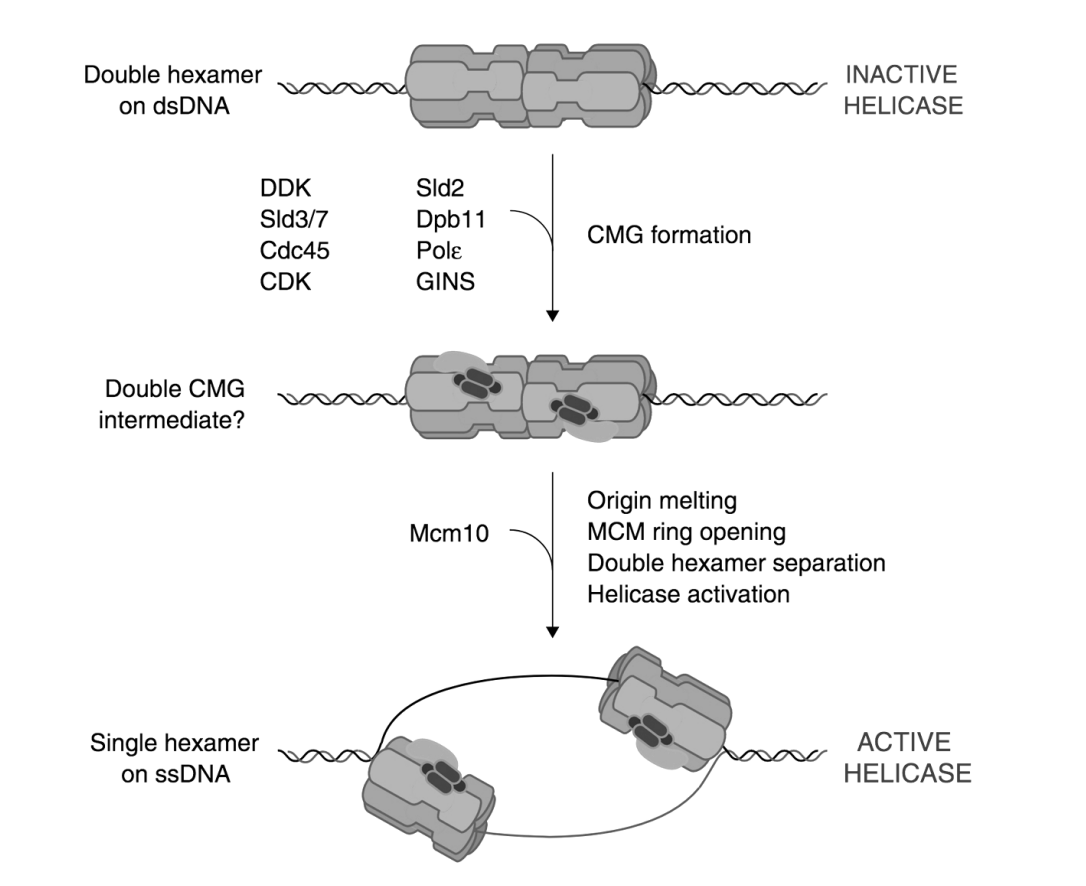
After unwinding, the active CMG DNA helicase…
translocates on the DNA leading strand
in 3’ to 5’ direction
Dependent on ATP hydrolysis
THEREFORE→ displacing the complementary DNA strand
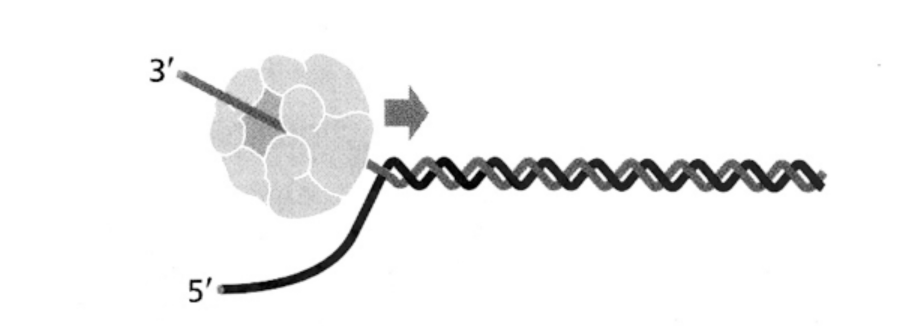
What does this cause?
Around activated helicases, functional DNA replication fork complexes are assempled
Involving the recruitment of the DNA polymerases and replication factors
Types of DNA polymerases→ 6 major DNA polymerases (pol) in eukaryotes
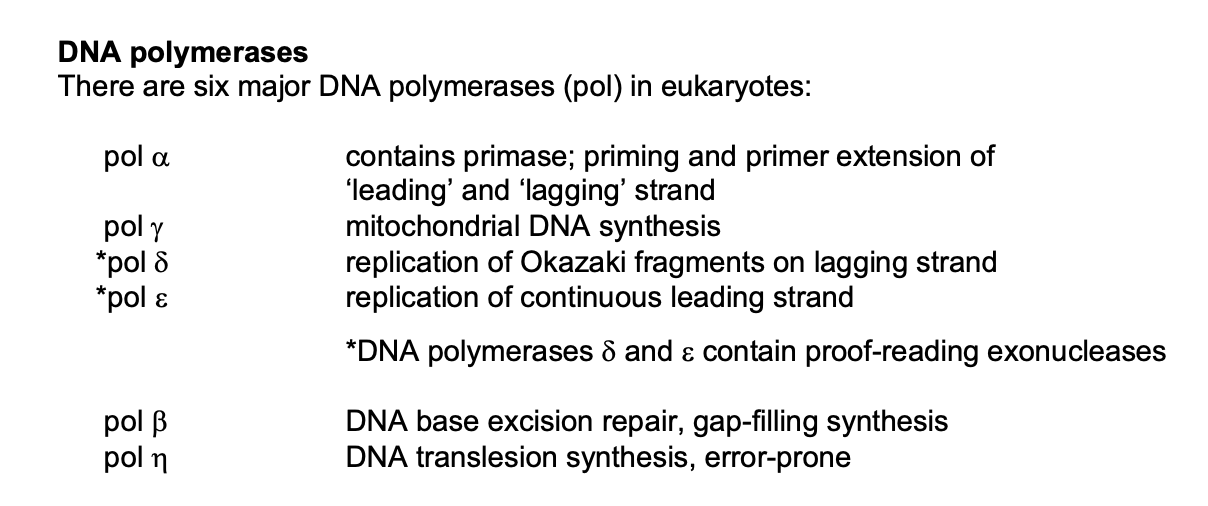
But, DNA polymerases make mistakes, they are corrected by…
Proof-reading exonuclease activity
by mismatch repair systems
Error rates of the pol
pol alpha is the worst
pol gamma or epsilon
pol gamma or epsilon

Replication factors: other crucial proteins of the eukaryotic DNA replication fork include:
DNA helicases→ unwind the two DNA strands, generate ssDNA templates
RPA→ single strand binding protein, stabilities the unwound strands, recruits pol alpha/primase
PCNA→ sliding clamp, binds to pol gamma and epsilon, Fen-1 and others
RFC→ loads and unloads PCNA
Fen-1→ flap endonnuclease, removes sort primers
Dna2→ endonuclease, removes long primer flaps
DNA ligase I→ joins Okazaki fragments
DNA topoisomerases→ release superhelical stress

Please note:
my notes from BoC are so much better than this
On top of this…recent proteomic analysis of isolated DNA replication fork complexes have identified…
large amounts of additional proteins which play a role in
maintaining replication fork stability
facilitating replication of damaged DNA
replication of chromatin templates
DNA synthesis at DNA replication forks: concerted action of these core replication proteins during DNA strand synthesis in eukaryotes
INitiation and elongation of DNA strand synthesis
→ applies to both leading and lagging strand
Maturation of Okasaki fragments (lagging strand)
INitiation and elongation of DNA strand synthesis
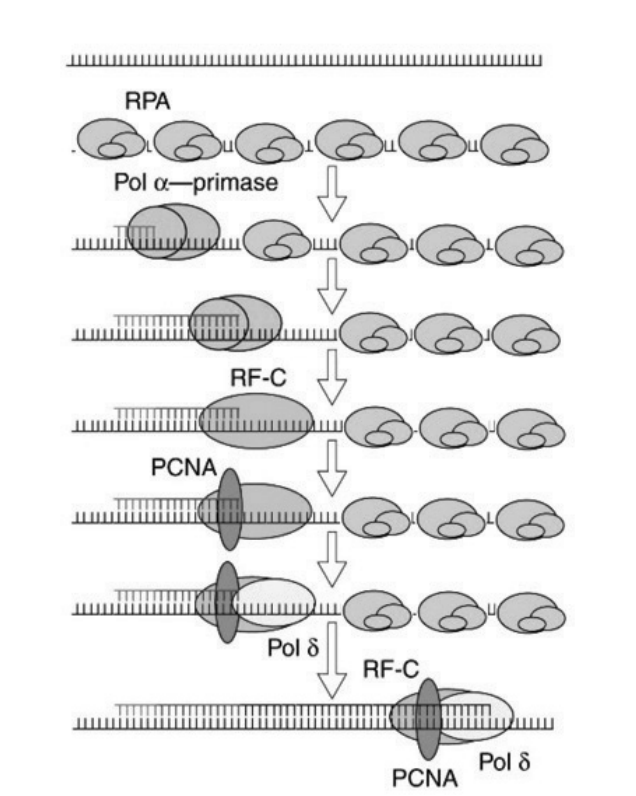
Maturation of Okasaki fragments (lagging strand)
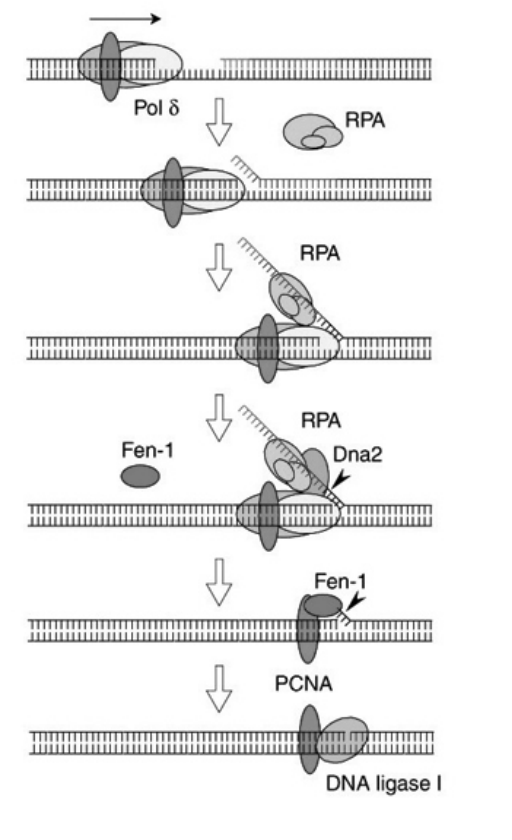
To establish a DNA replication fork…
both leading and lagging strand synthesis are coupled
the lagging strand is looped back to obtain co-linearity
→ trombone model
The proteins of the replication fork thus form…
a complex ‘molecular machine’
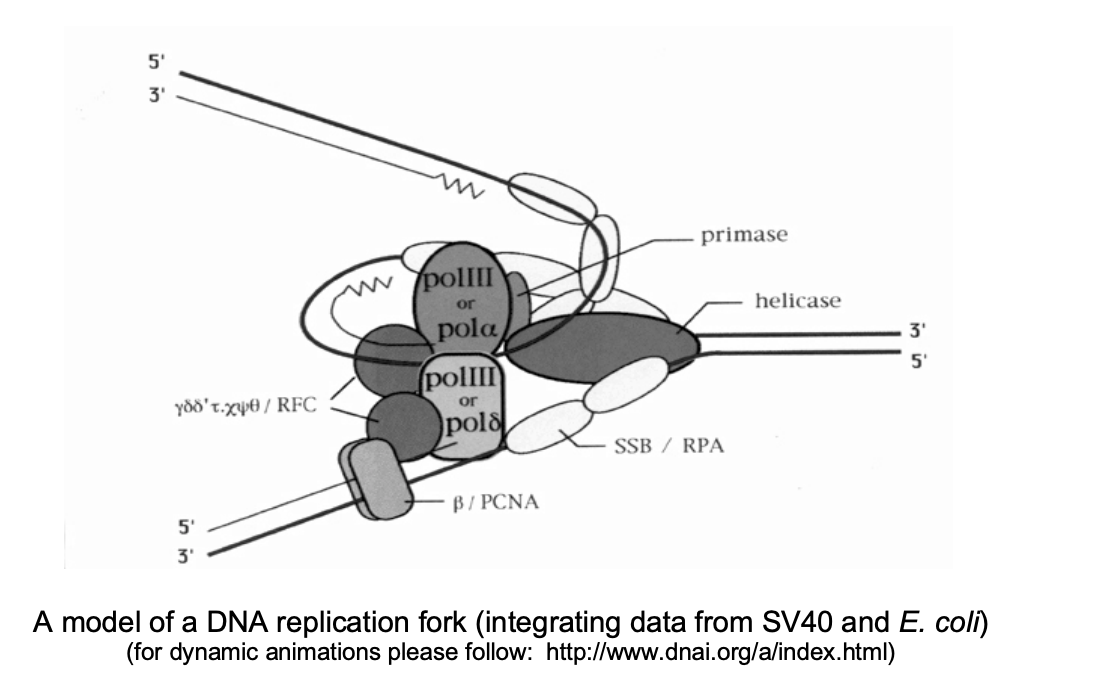
DNA topoisomerases: The immense length of DNA in the nucleus generates topological problems…
Winding
Average human chromosome (150Mbp)
DNA strands wind around each other (1.4 ×107 times)
These turns must be removed during replication
Supercoils
separation of DNA strands during transciption and DNA replication generates positive supercoils
ahead of the moving polymerase complexes
would eventually pprevent further elongation
How do DNA topoisomerases resolve this issue
altering the number of times DNA strands wind around each other
How does DNA topoisomerase I work?
nicks one strand of a DNA duplex
attaches a DNA phosphate group to a tyrosine residue in its active centre
covalently forming a new ester bond
Allows roatation of the free end of the cut strand around the uncut single-strand
seals the nick
breaks the ester bond of the DNA
with tyrosine
re-ligating the DNA without requiring ATP
these are trans-esterifications
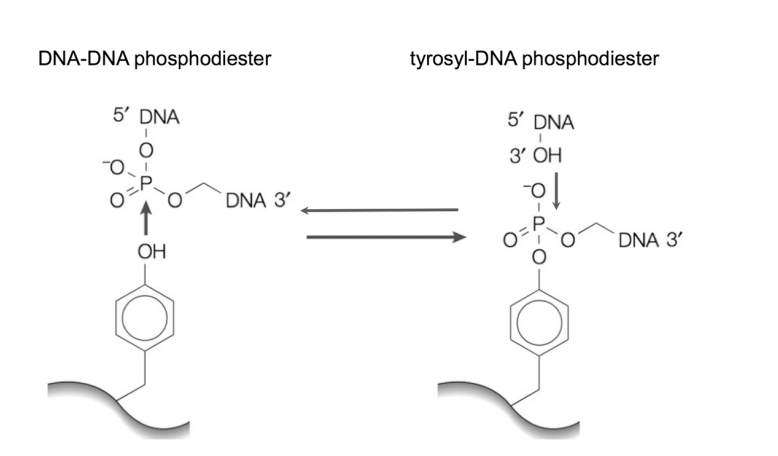
This process can therefore…
Remove strain imposed on a molecule by local helix unwinding
as found in front of active DNA or RNA polymerases
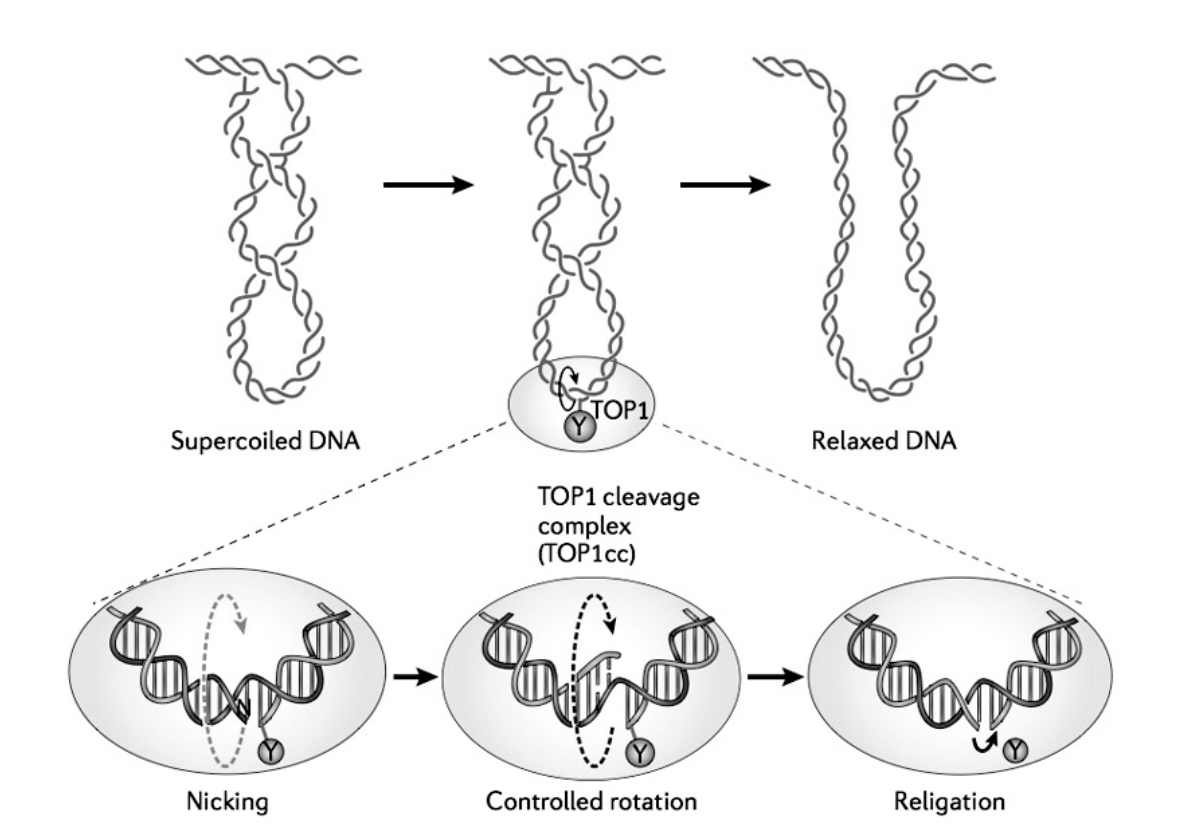
HOw does DNA topoisomerase II work?
cuts both strand
bridges the gap
allwoing other regions of DNA duplex to pass through before
resealing, removing supercoils from the DNA
This enzyme can also…
Separate interlocked DNA rings (concatemers or catenanes)
This property is essential in
the final stages of DNA replication
and during mitosis
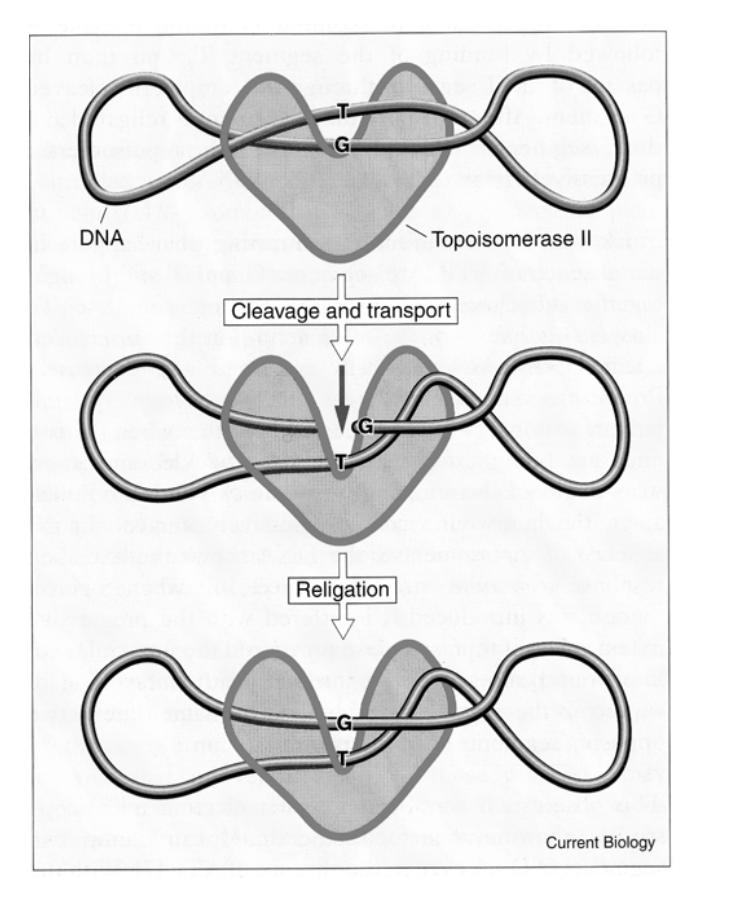
Replication of telomeres: termination problem
mechanism of co-ordinated leading and lagging strand synthesis
leads to loss of DNA at the linear ends of the chromosomes→ telomers
shorted after each cycle
How is this loss counteracted?
Enzyme telomerase can elongate the ends by
synthesising and adding new telomere repeats onto the ends
using own RNA template
